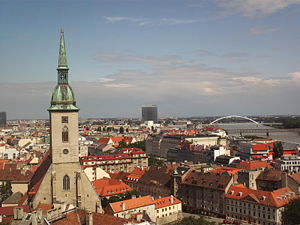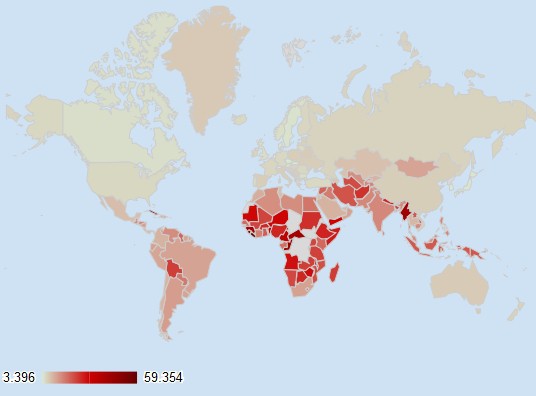Fiber-fast broadband networks, advanced DSL, and the latest cable broadband technology has allowed Bohemian broadband to help kick Canada and the United States into middle place for broadband speeds and web page loading time, according to statistics released by Google.
Google crunched the data from visits to websites all over the world by site owners supporting Google Analytics. Google’s measurement of web page load times gives researchers several clues about how to assess broadband quality. The data combines the speed of the user’s broadband network, how congested that network is, the quality of the service provider’s backbone connection, and the design of the web site visited.
The findings deliver a boost to central Europe where the Czechs and Slovaks are nearly neck and neck for top honors.
Google found the world’s fastest page load times in Slovakia (formerly the eastern half of Czechoslovakia.)
From Bratislava to Košice, Slovaks wait an average of 3.3 seconds for web pages to load on their desktop computers. On mobile devices, the slightly longer wait time of 7.6 seconds still places the country in the top 10. Americans wait 5.6 seconds for desktop connections, 9.2 seconds for wireless.
South Korea took second place. Koreans have enjoyed the world’s fastest broadband in speed rankings for years, but Eastern Europe’s enormous investment in fiber broadband and upgrades to legacy telephone and cable networks all make a difference.
The Czech Republic won third place. That’s not surprising, considering Spanish owned Telefónica O2 Czech Republic has been in a hurry to completely overhaul the former state-owned Český Telecom. While Americans fight for 1-3Mbps DSL from suburban and rural phone companies, O2 provides most Czechs ADSL2+ or VDSL service in non-cable TV areas at speeds up to 25Mbps. In larger Czech cities cable companies like UPC offer budget speeds of 2Mbps or lightning fast service up to 120Mbps for those who want it.
The top scores for broadband speed were achieved in Europe or Asia. Farther down the list are the United States and Canada. Canada scored slightly higher than the United States.
Most of the countries stuck at the bottom are in Latin America, Africa, and poorer Asian nations.
Google refused to release the raw data, but Bloomberg News did a lot of the work identifying broadband winners and losers.
Examine the rankings below the page jump:
Top 10 in Desktop Speeds (in seconds)
- Slovak Republic (3.3)
- South Korea (3.5)
- Czech Republic (3.7)
- Netherlands (3.9)
- Japan (4)
- Denmark (4.3)
- Switzerland (4.3)
- Sweden (4.5)
- Belgium (4.6)
- Norway (4.8)
Bottom 10 in Desktop Speeds (in seconds)
- Chile (10)
- Colombia (10.2)
- Peru (11.7)
- Brazil (11.8)
- Argentina (12.8)
- Malaysia (14.3)
- Venezuela (14.9)
- India (15.1)
- Philippines (15.4)
- Indonesia (20.3)
Top 10 in Mobile Speeds (in seconds)
- South Korea (4.8)
- Denmark (5.2)
- Hong Kong (5.9)
- Norway (6)
- Sweden (6.1)
- Estonia (6.2)
- Czech Republic (6.3)
- Japan (6.4)
- Romania (7.5)
- Slovak Republic (7.6)
Bottom 10 in Mobile Speeds (in seconds)
- Malaysia (12.7)
- Indonesia (12.9)
- Singapore (12.9)
- Mexico (14.1)
- Brazil (15.8)
- Argentina (16.3)
- India (16.4)
- Thailand (17.4)
- Saudi Arabia (21.2)


 Subscribe
Subscribe


Thanks to Lobbying and No Competition and Greed.
Best part – over 50% of Czechoslolvakians get their broadband from fixed wireless providers. Competition is a good thing.